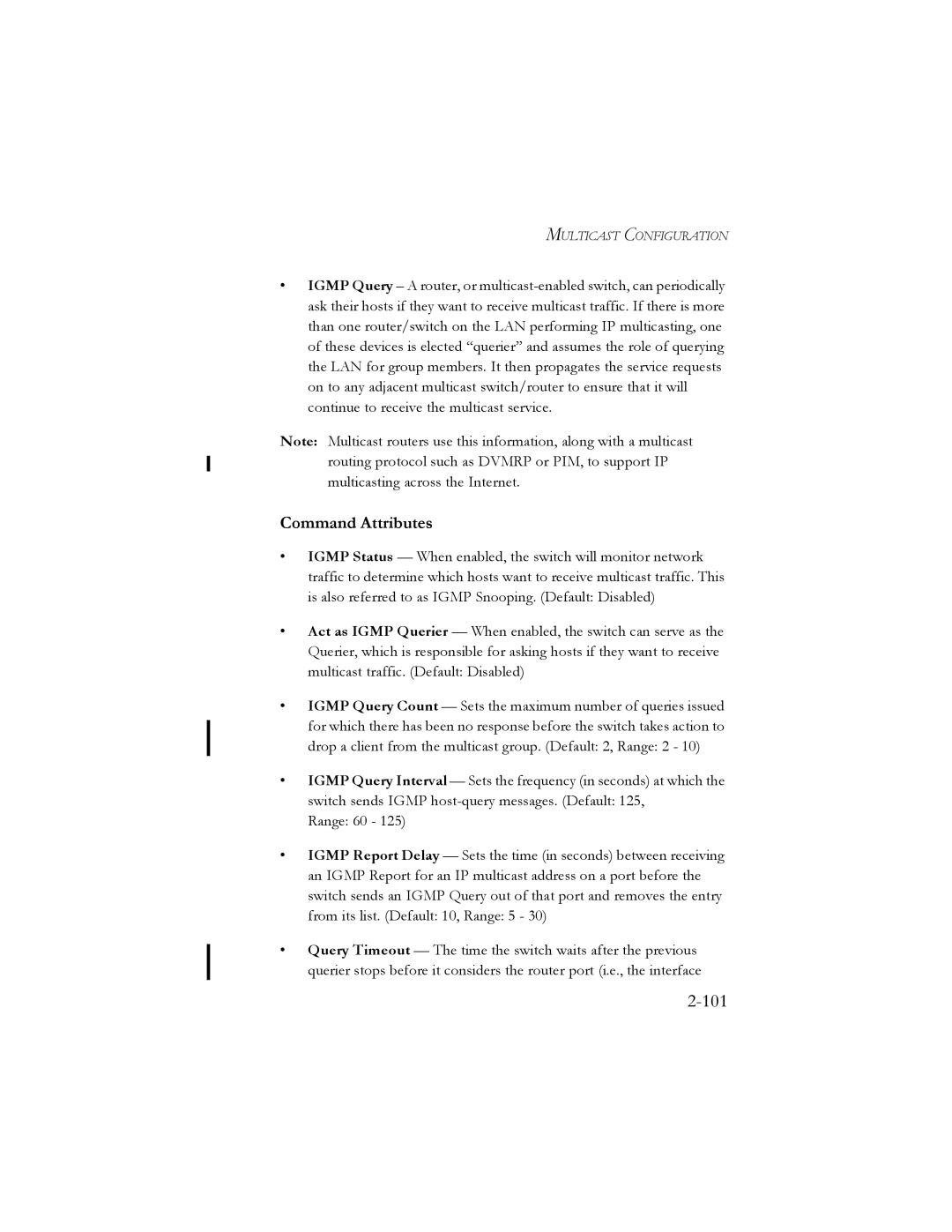MULTICAST CONFIGURATION
•IGMP Query – A router, or
Note: Multicast routers use this information, along with a multicast routing protocol such as DVMRP or PIM, to support IP multicasting across the Internet.
Command Attributes
•IGMP Status — When enabled, the switch will monitor network traffic to determine which hosts want to receive multicast traffic. This is also referred to as IGMP Snooping. (Default: Disabled)
•Act as IGMP Querier — When enabled, the switch can serve as the Querier, which is responsible for asking hosts if they want to receive multicast traffic. (Default: Disabled)
•IGMP Query Count — Sets the maximum number of queries issued for which there has been no response before the switch takes action to drop a client from the multicast group. (Default: 2, Range: 2 - 10)
•IGMP Query Interval — Sets the frequency (in seconds) at which the switch sends IGMP
Range: 60 - 125)
•IGMP Report Delay — Sets the time (in seconds) between receiving an IGMP Report for an IP multicast address on a port before the switch sends an IGMP Query out of that port and removes the entry from its list. (Default: 10, Range: 5 - 30)
•Query Timeout — The time the switch waits after the previous querier stops before it considers the router port (i.e., the interface
